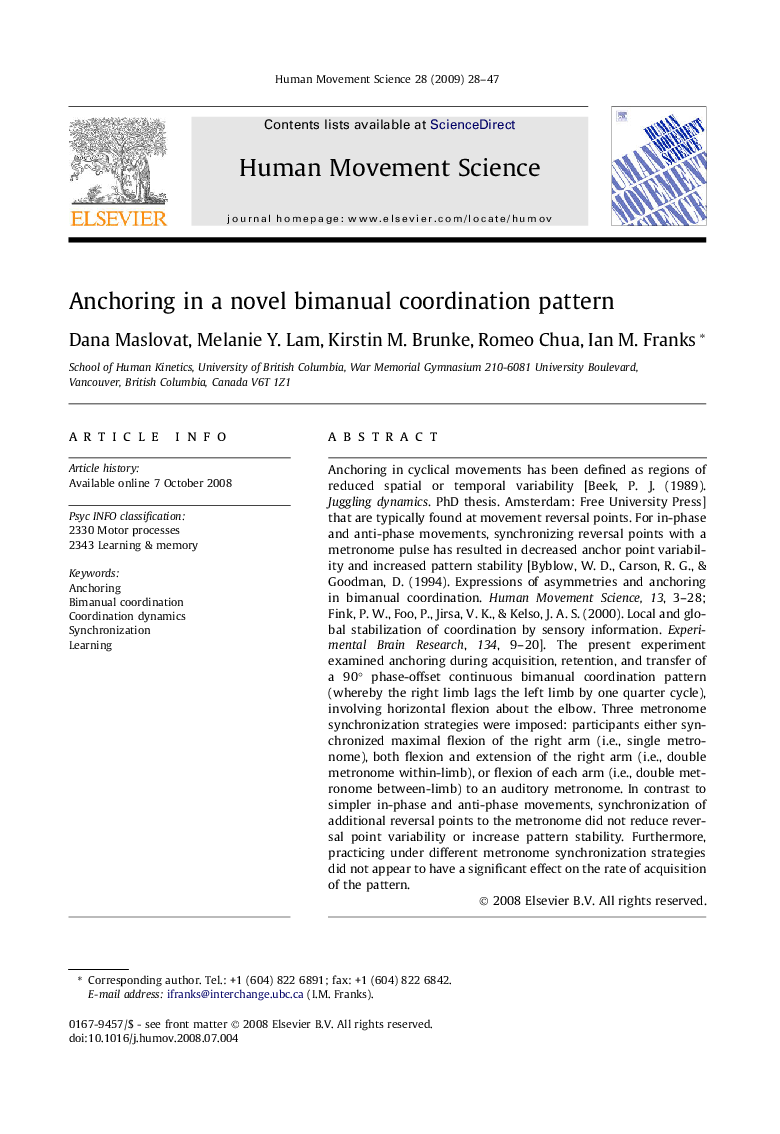| Article ID | Journal | Published Year | Pages | File Type |
|---|---|---|---|---|
| 928780 | Human Movement Science | 2009 | 20 Pages |
Anchoring in cyclical movements has been defined as regions of reduced spatial or temporal variability [Beek, P. J. (1989). Juggling dynamics. PhD thesis. Amsterdam: Free University Press] that are typically found at movement reversal points. For in-phase and anti-phase movements, synchronizing reversal points with a metronome pulse has resulted in decreased anchor point variability and increased pattern stability [Byblow, W. D., Carson, R. G., & Goodman, D. (1994). Expressions of asymmetries and anchoring in bimanual coordination. Human Movement Science, 13, 3–28; Fink, P. W., Foo, P., Jirsa, V. K., & Kelso, J. A. S. (2000). Local and global stabilization of coordination by sensory information. Experimental Brain Research, 134, 9–20]. The present experiment examined anchoring during acquisition, retention, and transfer of a 90° phase-offset continuous bimanual coordination pattern (whereby the right limb lags the left limb by one quarter cycle), involving horizontal flexion about the elbow. Three metronome synchronization strategies were imposed: participants either synchronized maximal flexion of the right arm (i.e., single metronome), both flexion and extension of the right arm (i.e., double metronome within-limb), or flexion of each arm (i.e., double metronome between-limb) to an auditory metronome. In contrast to simpler in-phase and anti-phase movements, synchronization of additional reversal points to the metronome did not reduce reversal point variability or increase pattern stability. Furthermore, practicing under different metronome synchronization strategies did not appear to have a significant effect on the rate of acquisition of the pattern.
